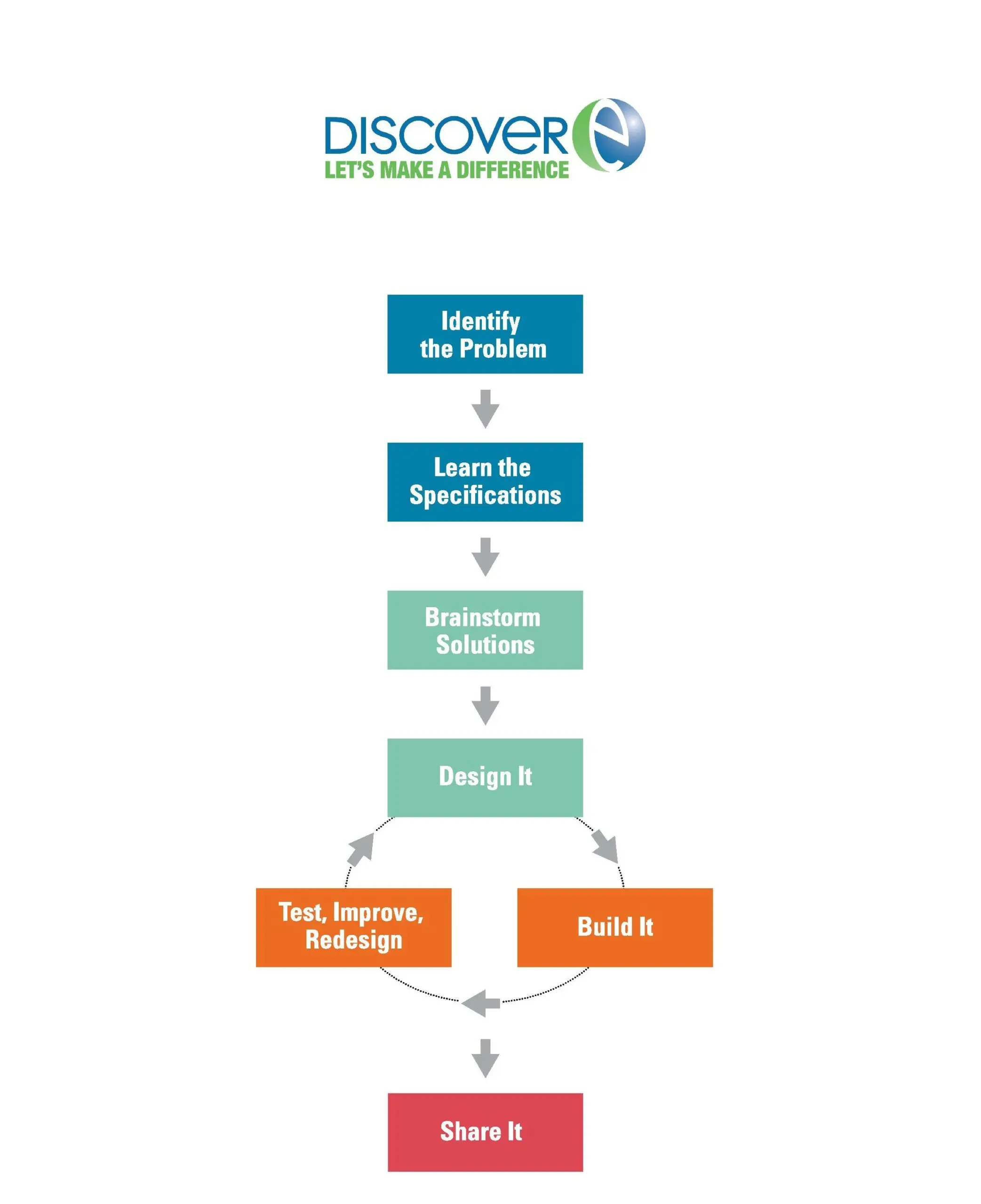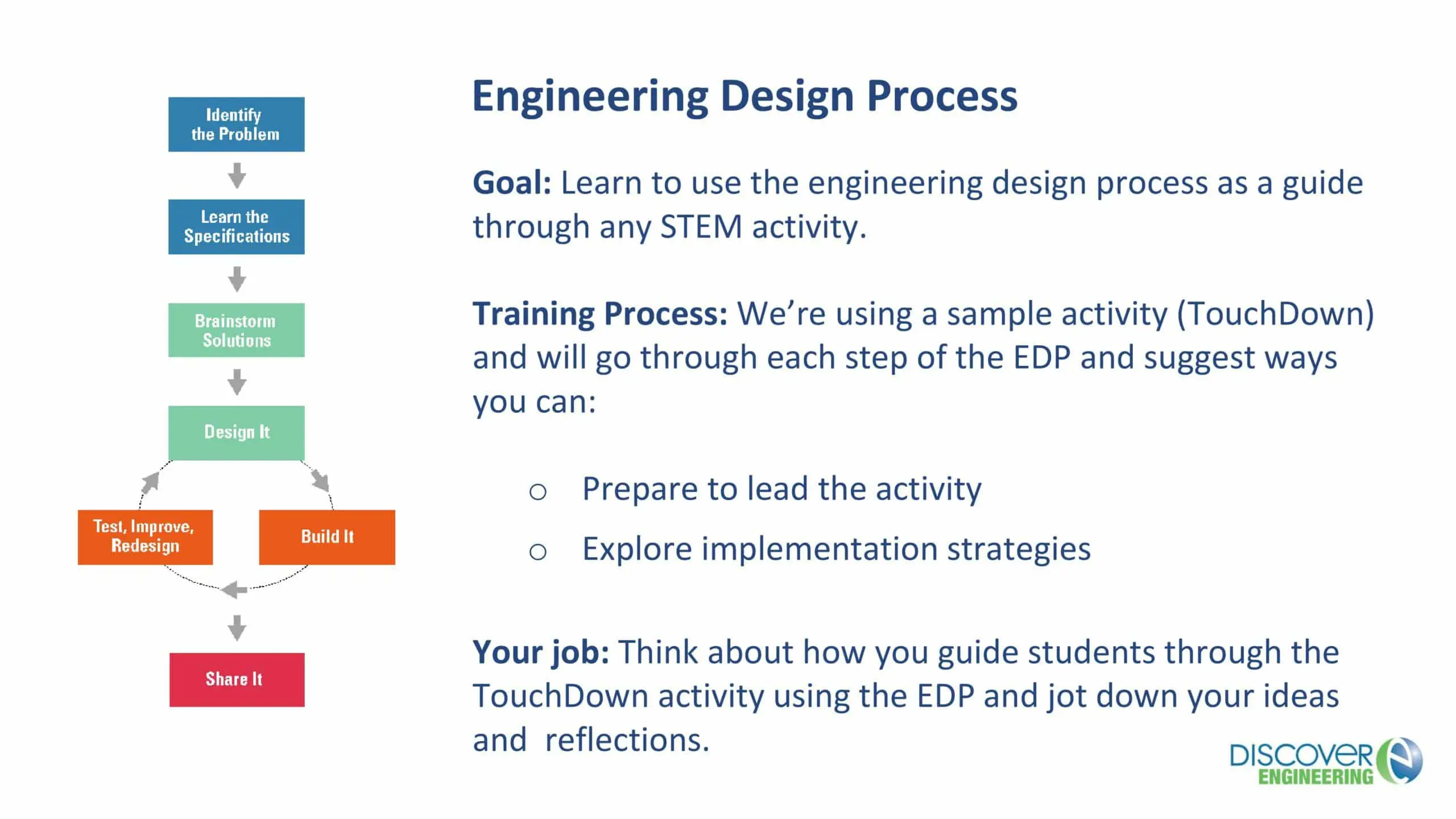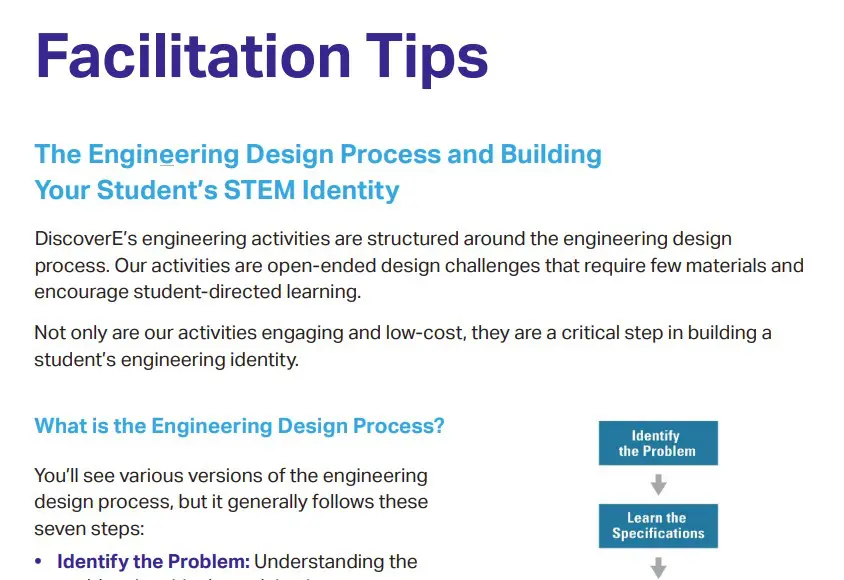Step 1
Engineering messages to share
Step 2
Engineering design process
Step 3
Leading STEM activities
Step 4
Be a role model
2
Engineering design process
When engineers, technicians, and technologists set out to solve a problem, their first solution is rarely their best. Instead, they tinker, try different ideas, fail, learn from their mistakes, and try again. This series of steps is called the engineering design process or EDP for short.
It’s a great way to nurture students’ creative thinking, help them see the benefits of teamwork, and place them at the center of their learning.
What is the EDP?
You’ll see various versions of the engineering design process, but it generally follows these seven steps:
- Identify the Problem: Understanding the problem is critical to solving it.
- Learn the Specifications: Discover what materials are available, find out any constraints, and understand what goal you are trying to achieve.
- Brainstorm Solutions: Coming up with many possible solutions paves the way for solving it.
- Design It: Now it’s time to choose the best solution and plan how to create it.
- Build It: Just like the name suggests, this is the building phase.
- Test/Redesign: What’s working? What’s not working? What improvements do you want to make?
- Share It: Presenting your work is a constructive way to conclude a project.
The EDP in action
Tips for using the EDP
- It’s not a linear process. When you see a graphic of the process, it looks like a nice straight line. But oftentimes people begin in one step and move back and forth between steps numerous times. For example, you may be in the design phase and want to test a piece of the design before moving forward.
- If at first you don’t succeed, try, try again. This saying is at the heart of the design process. Testing a design and then revising it based on what you’ve learned is an important key to success.
Reinforcing the design process
Open-ended challenges and projects framed around the engineering design process give students the space to direct their own learning. As students work through a challenge, your role is to guide, ask questions, and point out the various steps of the process.
The EDP in action
Tips for reinforcing the EDP
- Avoid giving too much direction. It discourages kids from thinking for themselves.
- Guide kids by asking questions. To help kids discover answers for themselves, ask: what have you tried? How did it work? Why do you think it didn’t work? What else could you try?
Final thoughts
Pick one or two EDP steps to focus on per activity. Some activities are really great at encouraging brainstorming, while others might be better suited to a longer exploration of identifying the problem. Don’t worry about an in depth exploration of each step. As you and your students do more EDP activities, they’ll get a chance to flex their problem solving skills and come to know each step in the process.
A few more tips
- Your role. Whether you’re an educator or STEM volunteer, integrating the design process into STEM activities comes down to pointing out the steps, avoiding the urge to ‘do’ it for them or telling them the answer, and asking lots of questions.
- Questions to have at the ready: What do you need to do now? How does your idea work? Why do you think this is happening? Is there another way to look at this? What else would you like to try?
- Choosing activities. Look for activities, like DiscoverE’s, that are framed around the engineering design process.




